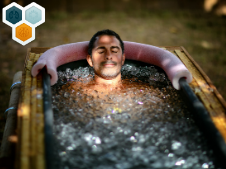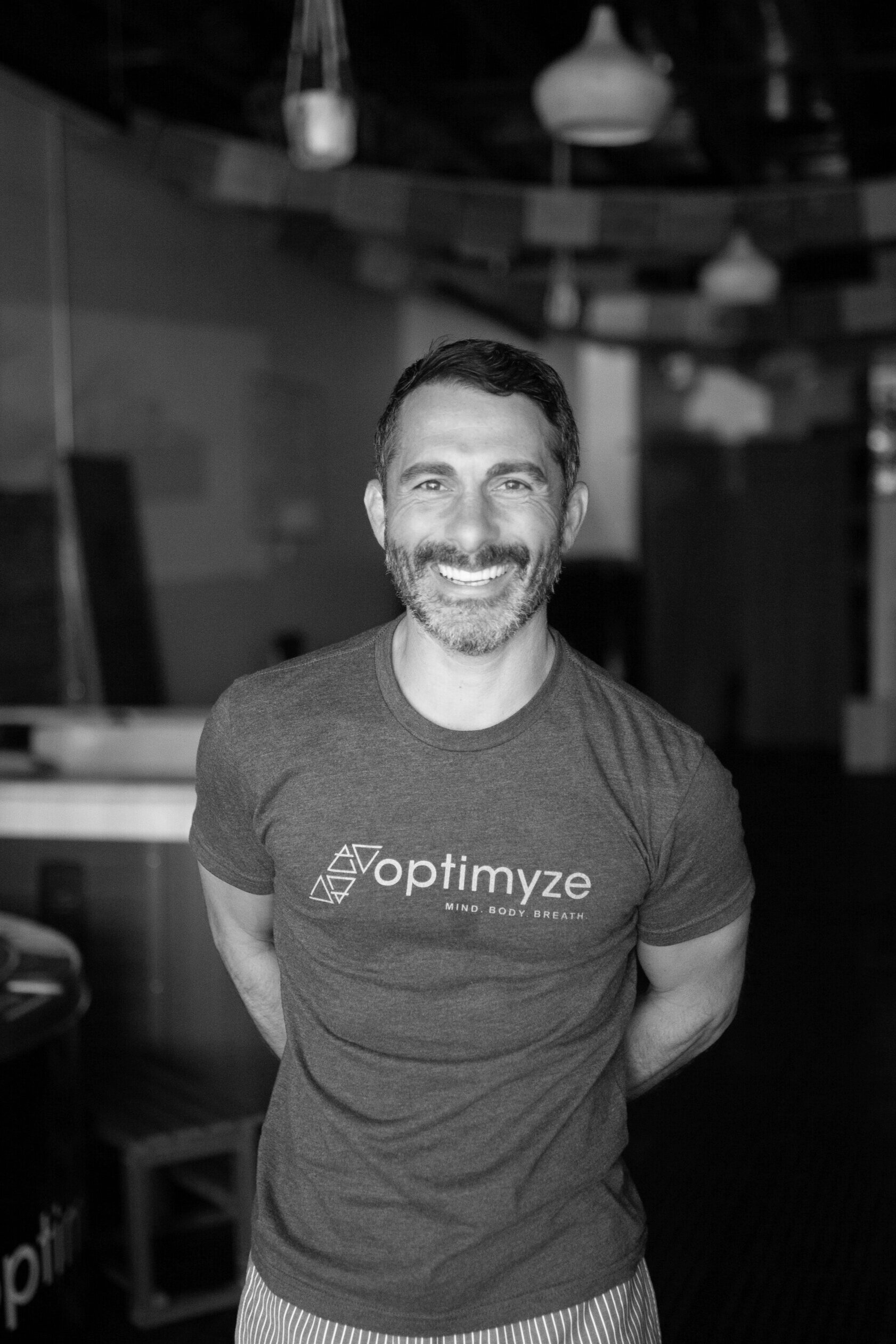Wim Hof Method and the Buteyko Method, do they complement or contradict one another?
Written by Jesse Moreng
What are the Wim Hof Method (WHM) and the Buteyko Method, and do they complement or contradict one another? Having trained and taught for several years with both of the methods I get questioned on how these two systems differ and relate quite a bit. Many individuals also believe that these systems contradict one another.
I am hoping this blog will introduce readers to both of these systems and then help those familiar or not familiar understand the purpose of each method and hopefully add some additional understanding. For those that do not know the Wim Hof Method was named and developed from a gentleman named Wim Hof. Wim Hof holds over 25 world records that mostly have to do with extreme temperatures.
Wim Hof AKA “The Iceman”
These include a record of being submerged in ice for over 2 hours, hiking up mt Everest in shorts and running a marathon in the desert with no water and many more. Although the world records brought lots of attention to him, he gained much credibility from the scientific community after a non-Guinness book of world records event. This event or scientific study known as the “Radbound university study” conducted in 2011. The study showed that by using his method, Wim was able to voluntarily influence his autonomic nervous system - something which until then was thought impossible. Wim Hof then replicated these findings in with a dozen individuals who trained with his method for just several days before being able to also influence their immune system against a control of over 10,000 people.
Some highlights of that study are here
Aimed to test if the results from the first study on Wim could be reproduced with a larger group
Injected 12 Wim Hof Method practitioners with an endotoxin
Results showed that, like Wim, they were able to control their sympathetic nervous system and immune response
Anti-inflammatory mediators were ~200% higher, while pro-inflammatory mediators were ~50% lower
Potentially important implications for “conditions associated with excessive or persistent inflammation, especially autoimmune diseases.” (2014, Knox et. al.)
The Wim Hof Method is a made up of 3 pillars. A specific breathing exercise, cold water immersion and mindset training. Among other things, the breathwork and cold training are both designed to tap into the sympathetic nervous system to train the body how to handle deep primal levels of stress. Gaining “calm” and pushing back against the extreme stress of freezing water using breath and mind is meant to begin to train ones human ability to gain more control over the nervous system which also is tied to many other systems in the body.
The breathwork of the WHM is also a sympathetic inducing exercise. With the breathing of the Wim Hof method, one consciously induces sympathetic (fight or flight) responses while playing with the blood gases of our bodies. The sympathetic induction has many physical responses such as the production of adrenaline and moving lots of oxygen and CO2 in and out of the blood and tissues. The breathing of the Wim Hof method is deep and full and continuous or circular rounds followed by breath holds or retentions. It is now recommended by Wim’s company and us as certified instructors to teach this method through breath in the nose. In doing so it mimics a conscious type of hyperventilation (although different because of the nasal breath and the conscious control) and then is followed by breath holds or breath retentions.
Typically, 3 rounds of circular breathing following by breath retentions are completed followed by a meditation or time when one just lies and sits and enjoys the newly achieved state they are in. The breathing portion of the WHM is a breathing exercise and not a training on how to breath on a consistent regular way. Although this breathing exercise works and can strengthen the diaphragm and provide benefits to regular breath mechanics, it is not the way in which we as humans would choose to breath on a consistent basis. One of the ideas of the WHM is that the high and low levels of both O2 and CO2 create much movement of energy as well as create a deep euphoric feeling. Bouncing between deep states of sympathetic and parasympathetic happen during this exercise. Consciously releasing chemicals in the body and gaining awareness on internal happening is a piece of this method. As one breath deep and full and continuous more CO2 is released and more oxygen enters the blood. However, the opposite happens in the tissues because CO2 is what triggers the release of oxygen from the blood (via hemoglobin) to the tissues. When the breath is held, CO2 begins to rise and rise…releasing the oxygen from the hemoglobin in the blood to the tissues. Thus, we starve the tissues of oxygen (while flooding the blood with O2) during full circular breathing and then flood the tissues with oxygen from the blood during the breath hold. As the oxygen gets very low in the blood, the CO2 gets high and thus triggers our first breath after the retention. In a way the WHM breathing is interval training for our blood gases. The Wim Hof method has powerful implications for training the nervous system and also practicing working the most important breathing muscle - the diaphragm.
The breathwork effects the pain receptors and creates a temporary alkalosis in several parts of the body. The natural anti-inflammatory and anti pain this breath work provides is a great alternative to external drugs ridden with side effects. The WHM breathing moves energy in places and plays with extremes in blood gas exchange that most have never experience and trains the mind body and spirit to consciously experience sympathetic induction and then induce deep parasympathetic states. The deep euphoric states achieved as well as the assistance the method gives to get someone out of their heads and into their bodies.
I have found that this exercise is great for individuals who have a hard time meditating or siting still as it provides them a full effort exercise that puts them quickly in a state of deep relaxation and healing. The cold water and mindset piece of the Wim Hof method are something that the Buteyko method doesn’t touch on. The breathing is where much of the comparison happens. We will do more writing on the other pieces of the WHM in the near future and focus on the breath work for this blog. There are several safety concerns of the WHM and the biggest one as instructors is to make sure to share that the breathing exercise and the cold training are never to be done together.
The cold water training we promote slow and calm breathing. For the deep and full breathing of the WHM its crucial its only done while laying down as its possible for consciousness to be interrupted. Additionally, these exercises train the heart similar to vigorous exercise to anyone not cleared to do intense exercise should likely not be doing this method. Pregnant women, those with epilepsy or severe heart conditions we do not recommend doing the WHM. As always consult your doctor before starting any program.
Below is a summary of some of the benefits of the WHM breathing exercise
Stress reduction
Faster recovery from physical exertion
Better sleep
Improved sports performance
Enhanced creativity
More focus and mental clarity (cite wimhofmethod.com)
Konstantin Pavlovich Buteyko
Now onto the Buteyko method. The Buteyko method or Buteyko Breathing Technique proposes the use of breathing exercises primarily as a treatment for asthma and other respiratory conditions as well as performance and overall health. The therapy takes its name from Soviet doctor Konstantin Pavlovich Buteyko, who first formulated its principles during the 1950s. It is based on the assumption that numerous medical conditions, including asthma, are caused or exacerbated by chronically increased breathing, increased respiratory or over breathing due to one’s tolerances of CO2. Carbon dioxide /CO2 is the gas that triggers us humans to breath. It is never a lack of oxygen but instead the level of CO2 that drives discomfort that forces us to breath. The Buteyko methods goal is to retrains breathing pattern through chronic repetitive breathing exercises to increase tolerance to CO2 thus allowing us to breath less and allow more oxygen to get from the blood to the tissues. The exercises include a series of reduced-breathing exercises that focus on nasal-breathing, breath-holding and relaxation.
This system that is designed to change ones overall breathing pattern is made up of a series of many exercises along with a way and understanding of the science with recommendations on how to breath for the vast majority of our lives. It works in a systematic way to help us breath less. This may seem counter intuitive to many things we here because with the Buteyko method a deep full breath is not one of the things it promotes. In the Buteyko method the main advice is to work to breath less and through your nose as mush as humanly possible (even during exercise) When we breath less, higher levels of CO2 in the blood allow for more oxygen to be transported from the blood to the tissues.
The Buteyko method utilizes an exercise called the “BOLT” score or the “Body oxygen Level Test / BOLT”. This simple and easy test gauges where your current CO2 tolerance is and is the time after a normal exhalation that you hold your breath until the 1 st significant urge to breath (not your max breath hold time). This time would simulate when you would unconsciously take a breath during the day or while sleeping when you are not paying attention. Your bodies natural time is typical takes in between breaths in a resting state. Another main exercise of this system can be called “very little breathing” and consist of rounds (typically several minutes long) of breathing less than you normally would maintaining a slightly uncomfortable “oxygen hungry” state where you keep yourself breathing less than you want to. One typical format of Buteyko training would be 1)- an easy breath hold followed by 2) – very little nasal breathing for 2 minutes followed by 3) normal nasal breathing for 1 minute and repeating 5 times. There are also countless other exercises such as breath holds during exercises, nasal clearing drills for children and adults among many more.
The Buteyko method promotes nasal breathing and even utilizing special tape to shut one’s mouth at nighttime and force nasal breathing. The more one uses their nose to breath the more it opens and vice versa. As with any method or technique depending on where someone falls with their health and breathing mechanics would determine how they would be instructed to start. If someone had a BOLT score of 6 for example, taping the mouth shut would likely be too much to start with. Nasal breathing benefits are a huge focus as is nasal clearing exercises. The science of the role of both CO2 as a positive and of nitric oxide are focused on.
As one performs these exercises on a consistent basis, they can dramatically improve their tolerance to CO2 and thus allow more oxygen delivery to their tissues. It has been found that this has profound effects on overall health and especially chronic illnesses dealing with the respiratory system.
Some the benefits/advantages of the Buteyko method include:
Its harmless if practiced as directed by a well-trained Buteyko instructor
It can help you save money by not spending money on doctors’ bills
It can help one go off of drugs. Many people have tapered down or eliminated the use of asthma medications, including steroids which have harmful side effects if taken over the long term.
Feel better. Asthmatics, allergy sufferers are provided a natural way to breath better. When breathing is improved we wake up feeling better, more energetic and have less incidence of coughing, sneezing and breathing problems. .
It gives you control. The Buteyko Method enables you to completely control a coughing fit, relax into an asthma attack so you can regain your breath and avoid panicking if you are somewhere without your inhaler.
It contributes to overall health. Because the Buteyko breathing techniques bring CO2 levels in your lungs back to normal, they have a positive effect on the immune and metabolic system. People discover that they feel better, have fewer colds and flus and get relief from symptoms they didn’t even know were related, such as fatigue, low-level depression, joint pain and eczema. I highly recommend both of these systems.
Now let’s recap the differences WHM is a method combined of 3 pillars. One pillar is a specific breathing exercise that can be modified slightly but its mainly one breathing exercise. The Buteyko method is a system that just focuses on breathing and is made up of many exercises that all focus on training nasal breathing and higher levels of CO2 tolerance. The WHM breathing exercise is not designed to teach one how they should breath most of the time. It promotes something that has tremendous benefits but only meant to do for short durations The Buteyko breathing exercises are meant to train and teach on how to breath for the majority of their lives. The WHM breathing creates temporary euphoric states and moves both O2 and CO2 dramatically and can trigger the release of emotions and induced a type of controlled panic which helps many with dealing with anxiety, depression and others. The Buteyko breathing is mainly focused on the movement of CO2 to higher levels but never to the extremes that the WHM goes with the gas. These breathing methods can be used in combination with one another. One is among other things a powerful state altering exercise and the other is system of changing ones breathing and help alleviate respiratory conditions. Its important to find a qualified instructor to train you in either of these systems.
Disclaimer:
All information posted is merely for education and informational purposes. It is not intended as a substitute for professional or medical advice. Please consult with your Primary Care Physician if you have any concerns or questions. Should you decide to act upon any information on this website, you do so at your own risk.
Author Jesse Moreng
Jesse is the cofounder of Optimyze, Mind, Body, Breath a human optimization center located in Phoenix, AZ. Jesse is also a certified Wim Hof Method instructor”, a Certified Health Coach (Institute of Integrative nutrition 2011), a Certified Advanced Buteyko Method instructor as well as a Functional Patterns Human foundation instructor (level 1).






